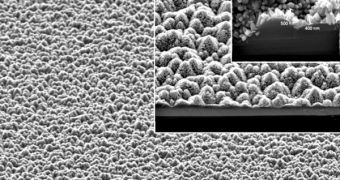Applying nanostructure films to various surfaces is an achievement that would considerably advance the field of electronics production, and would also lead to more advanced equipments. But this is notoriously hard to do, as experts working on making this a reality know. Chemical engineers at the Oregon State University (OSU) have recently managed to move past this obstacle, when they have created a new technology that allows for depositing the nanofilms on different types of substrates.
One of the most immediate applications for their technique would be the creation of coatings for eyeglass lenses, which could become a lot cheaper, and also more effective. These films could be used for a variety of purposes on lenses, such as reducing the reflectance of light and glare, capturing more light, and reducing exposure to ultraviolet wavelengths in sunlight. The new method is touted as a cheaper alternative to already-existing technologies related to some of these processes. For instance, lenses that turn black when exposed to sunlight already exist, but they are fairly expensive.
Naturally, the new layers could also be used in the future to create a new generation of highly efficient solar cells. These cells could harvest a lot more of the energy stored in sunlight than any existing ones. “There's really a whole range of things this technology may ultimately be useful for. They should be able to make almost any type of solar energy system work more efficiently, and ultimately could be used in cameras or other types of lenses,” OSU Department of Chemical, Biological and Environmental Engineering Associate Professor Chih-hung Chang explains.
The new OSU method can deposit nanofilms on substrates ranging from glass and plastic to silicon and aluminum. Its most important innovation is the use of a microreactor-controlled chemical bath, which ensures the orderly deposition of countless pyramid-shaped structures in a very tight space. When light hits these structures, it is deflected. On the large scale, this means that less UV radiation, for example, passes through eyeglass lenses and reaches the eyes. This is very important for people who have eye conditions that do not allow them to be exposed to bright light.

 14 DAY TRIAL //
14 DAY TRIAL //